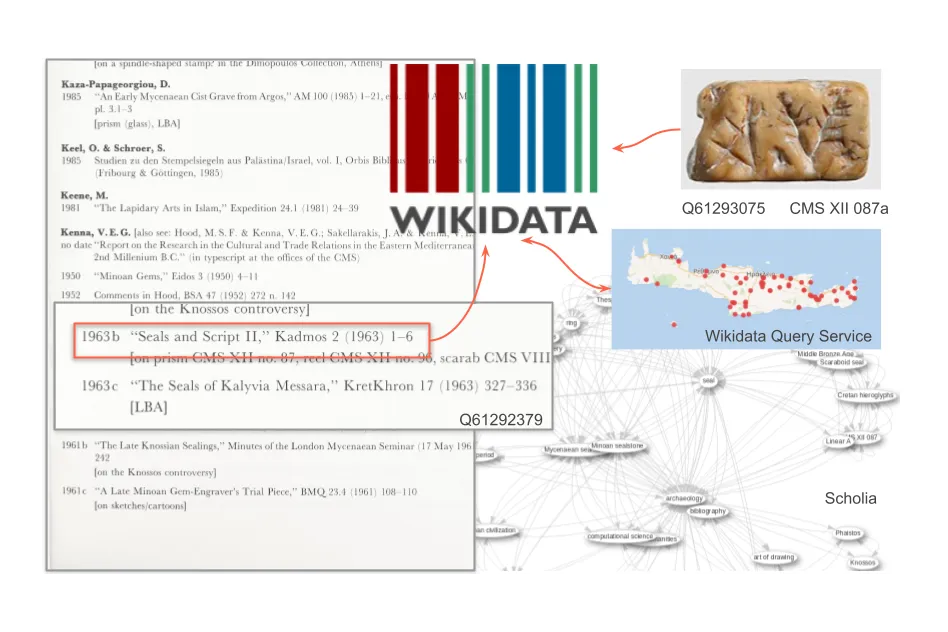
A Linked and Open Bibliography for Aegean Glyptic in the Bronze Age
- Hosting organisations
- ACDH-CH - Austrian Centre for Digital Humanities and Cultural Heritage
- Responsible persons
- Martina Trognitz
- Start
- End
Almost all known Aegean seals (not the animals) are recorded in the “Corpus der Minoischen und Mykenischen Siegel” (CMS).
The CMS is a long term project established in 1958, which aims at documenting and pulishing all known Aegean seals. The project was founded in Marburg and moved to Heidelberg in 2011. 2007 all seals were digitised and included in the object database Arachne from the University of Cologne and the German Archaeological Institute.
Besides the archive of the CMS and the onlnine databases, the 25 volumes of the CMS series and its nine supplementary volumes represent a major research tool in Aegean glyptic. Some of the CMS volumes are freely available in digital form (http://books.ub.uni-heidelberg.de/propylaeum/catalog/series/cms). Among these the recently digitised bibliography for Aegean Glyptic in the Bronze Age by John G. Younger (“A Bibliography for Aegean Glyptic in the Bronze Age” (1991), http://dx.doi.org/10.11588/propylaeum.367.518) is also available.
This bibliography offers an ideal entry point into the field of study of Aegean Glyptic, especially because the references are thematically and geographically indexed. Literature about Aegean seals published after 1990 is not included in the publication and a more recent bibliography was not published. Although there exist two online bibliographies about Aegean archaeology in general (Open Library for Aegean Archaeology and Nestor), and a selection of recent publications about Aegean Glyptic is listed on the webpage of the CMS, these sources are too broad or too static and do not fully use the potential a digitised representation presents.
This projects aims at taking Younger’s bibliography as a basis for an interactive and online available bibliography that can be extended in the future. Besides different filtering functionalities also an export for personal reference management will be available. Additional information shall be included, such as links to the full text or to the digital representation in Arachne of the mentioned seals, as well as cross references in the bibliography (i.e. which work is cited in which other works?).
The idea is to input the reference information into Wikidata. This allows anybody to correct present or to include new entries. Via a dedicated web application the references can than be presented in a user friendly format and made available for download.